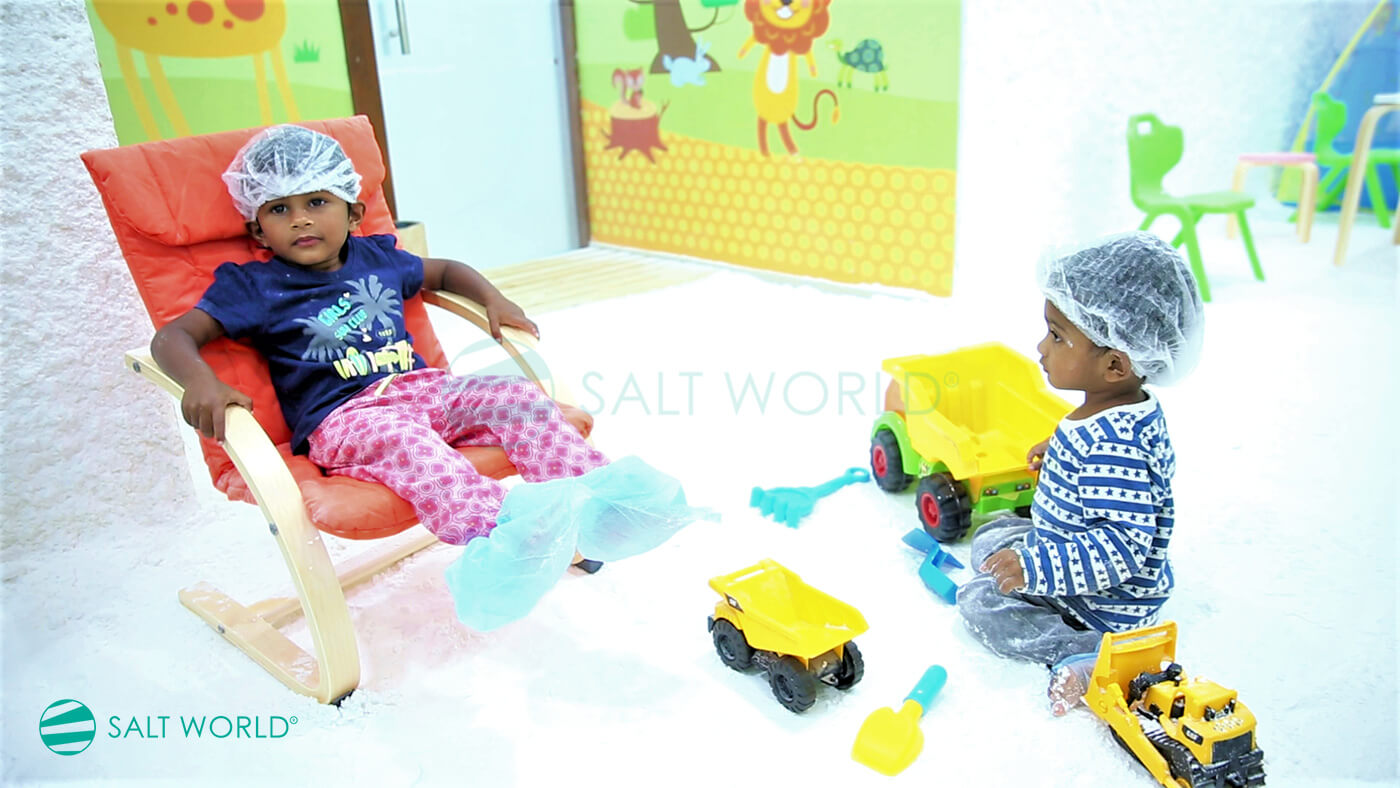1. Salt therapy involves massage with salt!
We love massages but Salt therapy does not involve any kind of massage. Salt therapy also called Halotherapy is a drugless natural therapy which requires you to sit in a sterile room where the walls and floor is covered with pure sea salt. You inhale minute salt particles which are dispersed into the room with the help of a device called halogenerator.
2. Salt therapy increases Blood pressure/Hypertension
This is the most common query we get from our clients before a session. Most people believe that inhaling salt could increase blood pressure. But this is not so. Because the salt particles used in the salt therapy is a dry aerosol which enters your respiratory tract and not your digestive tract. Hence, it is a safe therapy for any person even those suffering from BP.
3. Salt is harmful
Sadly, over the years salt has garnered a bad reputation because of its association with BP, diabetes, thyroid and other lifestyle diseases. But in the Indian culture, we have always revered salt and benefitted from its powerful properties since the ancient time. Salt is an anti-viral, anti-bacterial, anti-fungal and also anti-histamine. Even in modern medicine, we use saline water to sanitize and clean wounds, gargle the throat to get rid of sore throat, use it as a mouth rinse for dental problems and in nasal sprays to clear the sinuses.
4. Salt therapy involves sitting in a room covered with only Salt
In recent times, several meditation rooms, spas and resorts has sprung up where the entire structure or a few rooms are built or covered with salt. Just sitting in such rooms is not Salt therapy. Salt therapy involves not only sitting in a room covered with salt but also the use of the salt dispensing device known as the halogenerator. This device grinds salt particles to minute particles which is then blown into and circulated inside the room through air boosters. Patients inhale this salty air. The salt particles reach the deepest part of the lungs and help in cleansing, flushing out the toxins and facilitating easy respiration.
5. Salt therapy can be replicated at home
People confuse salt therapy with steam inhalation of saltwater or inhaling fine particles of salt through a pipe. Salt therapy has specifics and technicalities which require the floor and walls of a room to be covered with salt, maintaining specific room temperature, the right micro-climate and of course the use of a Halogenerator.
6. Inhaling Himalayan Pink salt
The salt you inhale while undergoing salt therapy is not Himalayan pink salt or table salt but pure Sodium Chloride (NaCl) which is pharmaceutical grade salt used in nasal sprays. Himalayan pink salt must be used for only cooking purposes and not in Salt therapy. Table salt contains bleaching agents to impart a pure white color, chemical like Calcium Silicate to make it free-flowing and also added iodine which must not be used for salt therapy.
7. It is an alternative therapy
Salt therapy is not an alternative therapy like Ayurveda or Homeopathy but a complementary therapy. This means it works exceptionally well when it is combined along with Allopathy or other therapies. Just depending solely on Salt therapy for permanent cure of respiratory and skin ailments may not be the answer to your problems.















